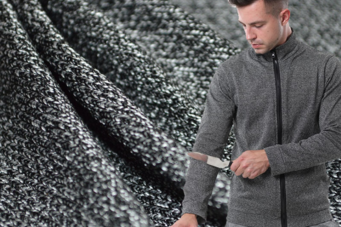Types and Properties of Safety Shoes
For foot protection, safety shoes, safety boots, shoe covers, and other protective equipment are common. Among them, safety shoes are commonly used in three categories. Below we will explain the types of safety shoes in the industry and the basic knowledge of safety shoes.
Types and properties of safety shoes
- Anti-smashing safety shoes: mainly to prevent objects from smashing the instep and toes. The front toe cap of the shoe is lined with metal material with good impact resistance, high strength, and lightweight. Pay attention to choosing safety shoes of different strengths according to the severity of the work.
- Anti-puncture safety shoes: The anti-puncture strength is level 1, which is suitable for mining, fire protection, construction, forestry, machinery industries, etc.
- Anti-smashing and anti-piercing safety shoes: suitable for metallurgy, mining, forestry, port, loading and unloading, quarrying, machinery, construction, petroleum, chemical industry, etc.
- Anti-chemical safety shoes: According to the substances used on the occasion, the protective functions are generally divided into anti-acid and alkali, anti-oil, waterproof, etc. Anti-acid and alkali safety shoes are suitable for places with acid and alkali and other corrosive solutions on the working ground and are made of acid and alkali-resistant rubber. Oil-proof safety shoes are used in oily workplaces and are made of rubber or polyethylene plastic. Waterproof safety shoes are used for the operation of water or water splash on the ground, with rubber as the basic shoe material.
- Anti-static safety shoes: used in dust-free electrostatic workshops and general special electronics factories. Anti-static safety shoes are equipped with anti-static or conductive soles, and the entire shoe does not use metal materials. Safety shoes are tested for resistance from the start and then periodically to ensure that the maximum resistance of the shoes does not exceed the allowable value.
- Electrically insulating safety shoes: Minimize the risk of electric shock during live work. Because the current is introduced into the ground through the human body through the contact point during electric shock, it is necessary to wear insulating gloves, insulating shoes, and anti-arc clothing during electrical work. Choose according to the withstand voltage range of the insulating safety shoes and the voltage range of the workplace. Insulated safety shoes should also be regularly inspected and maintained, and once the function fails, they must be stopped immediately.
- Anti-high temperature safety shoes: Also known as casting shoes and steel-making shoes in the industry, they mainly protect the feet from burns and punctures caused by high-temperature liquids. This kind of shoe should be resistant to pressure and not easy to burn. The upper has an oil-impregnated cowhide surface and canvas inlaid leather surface, and the soles are all tire-lined cow leather. To prevent the scalding of molten metal splashing liquid, all adopt the style of high waist and easy to take off. Generally, this type is used with high-temperature aprons, heat insulation clothing, high-temperature gloves, etc.
- Cold-proof shoes: used in low-temperature and severe cold environments. There are materials such as fur and felt boots inside the shoes, which have good thermal insulation performance.
Conclusão
There are many types of safety shoes. While giving people enough safety protection, they should also know more about the selection method of safety shoes. In addition to choosing the appropriate type of safety shoes according to the working environment, they should also fit comfortably.


.png?imageView2/1/w/341/h/227)






.png?imageView2/1/w/341/h/227)